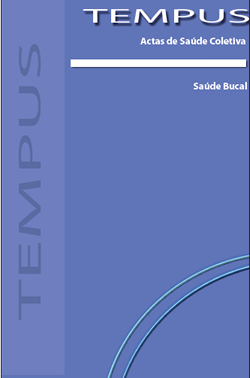Resumen
This article aimed to use epidemiological constructs to describe and analyze the oral health burdens among self-identified indigenous individuals in Brazil and to compare the findings with the oral health status within the non-indigenous population. The study utilized secondary data from the Oral health Brazil database (SB Brasil 2003) to address the null hypothesis that there were no oral health differences between self-identified indigenous and non-indigenous individuals in Brazil. Indigenous individuals had 3.17 (95% C.I.:2.44--4.13) greater odds of never having visited a dentist’s office than non-indigenous individuals. Indigenous persons had 1.55 (95% C.I.:1.20--2.00) greater odds of having periodontal problems than non-indigenous persons. Indigenous children had 1.71 (95% C.I.:1.37--2.14) higher odds of having a decayed, missing, and filled teeth score different from zero than non-indigenous children. Finally, indigenous persons were found to have 1.24 (95% C.I.:1.07--1.45) greater odds of not being a caries free individual than a non-indigenous person. The results lend credence to the suspicions that in Brazil there are unequal and unfair differences in oral health status and access to dental care between self-identified indigenous individuals and their respective national counterpart.Citas
Gomes, M. P. (2000). The Indians and Brazil (J. W. Moon, Trans.). Gainesville: University Press of Florida.
Ribeiro, D. (2000). The Brazilian people: the formation and meaning of Brazil (G. Rabassa, Trans.). Gainesville: University Press of Florida.
Brasil. (2013). Instituto Brasileiro de Geografia e Estatística. Censo Demográfico 2010 Retrieved Jan 2, 2019, from www.ibge.com.br
Pagliaro, H., Azevedo, M. M., & Santos, R. V. (2005). Demografia dos Povos Indígenas no Brasil: um panorama crítico. In H. Pagliaro, M. M. Azevedo & R. V. Santos (Eds.), Demografia dos Povos Indígenas no Brasil (pp. 11-32). Rio de Janeiro: Editora Fiocruz e Abep.
Pereira, N. O. M., Santos, R. V., & Azevedo, M. M. (2005). Perfil demográfico e socioeconômico das pessoas que se autodeclararam 'Indígenas' nos censos demográficos de 1991 e 2000. In H. Pagliaro, M. M. Azevedo & R. V. Santos (Eds.), Demografia dos Povos Indígenas no Brasil (pp. 155-166). Rio de Janeiro: Editora Fiocruz e Abep.
Ribeiro, D. (1970). Os Índios e a civilização: a integração das populações indígenas no Brasil moderno. Rio de Janeiro: Editora Civilização Brasileira.
Santos, R. V., Flowers, N. M., & Coimbra Jr., C. E. A. (2005). Demografia, epidemias e organização social: os Xavánte de Pimentel Barbosa (Etéñitépa), Mato Grosso. In H. Pagliaro, M. M. Azevedo & R. V. Santos (Eds.), Demografia dos Povos Indígenas no Brasil (pp. 59-78). Rio de Janeiro: Editora Fiocruz e Abep.
Coimbra Jr., C. E. A., Flowers, N. M., Salzano, F. M., & Santos, R. V. (2002). The Xavánte in Transition: Health, ecology, and bioanthropology in central Brazil. Ann Arbor: The University of Michigan Press.
Montenegro, R. A., & Stephens, C. (2006). Indigenous health in Latin America and the Caribbean. Lancet, 367(9525), 1859-1869.
Wirsing, R. L., Logan, M. H., Micozzi, M. S., Nyamwaya, D. O., Pearce, T. O., Renshaw, D. C., et al. (1985). The Health of Traditional Societies and the Effects of Acculturation [and Comments and Replies]. Current Anthropology, 26(3), 303-322.
Ribas, D. L. B., & Philippi, S. T. (2003). Aspectos alimentares e nutricionais de mães e crianças indígenas Teréna, Mato Grosso do Sul. In C. E. A. Coimbra Jr., R. V. Santos & A. L. Escobar (Eds.), Epidemiologia e saúde dos povos indígenas no Brasil (pp. 73-88). Rio de Janeiro: Editora Fiocruz / Abrasco.
Santos, R. V., & Coimbra Jr., C. E. A. (1998). On the (un)natural history of the Tupí-Mondé Indians: Bioanthropology and change in the Brazilian Amazon. In A. H. Goodman & T. L. Leatherman (Eds.), Building a new biocultural synthesis: political-economic perspectives on human biology (pp. 269-294). Ann Arbor: The University of Michigan Press.
Arantes, R. (2003). Saúde bucal dos povos indígenas no Brasil: panorama atual e perspectivas. In C. E. A. Coimbra Jr., R. V. Santos & A. L. Escobar (Eds.), Epidemiologia e saúde dos povos indígenas no Brasil (pp. 49-72). Rio de Janeiro: Editora Fiocruz / Abrasco.
Hirata, J. M., Bergamaschi, O., Oliveira Filho, A., Damico, L. A., Martins, C. A., Oliveira, L. B., et al. (1977). [Prevalence of dental caries among indians children living in Parque Nacional do Xingu, Brazil]. Rev Fac Odontol Sao Paulo, 15(2), 189-198.
Rigonatto, D. D. L., Antunes, J. L. F., & Frazão, P. (2001). Dental caries experience in Indians of the Upper Xingu, Brazil. Rev Inst Med Trop Sao Paulo, 43(2), 93-98.
Carter-Pokras, O., & Baquet, C. (2002). What is a "health disparity"? Public Health Rep, 117(5), 426-434.
U.S. Department of Health and Human Services (2000). Healthy People 2010: understanding and improving health (Second ed.). Washington, DC: U.S. Government Printing Office.
Stephens, C., Porter, J., Nettleton, C., & Willis, R. (2006). Disappearing, displaced, and undervalued: a call to action for Indigenous health worldwide. Lancet, 367, 2019-2028.
Stephens, C., Nettleton, C., Porter, J., Willis, R., & Clark, S. (2005). Indigenous peoples' health- why are they behind everyone, everywhere. Lancet, 10-13.
Chor, D., & Lima, C. R. (2005). [Epidemiologic aspects of racial inequalities in health in Brazil]. Cad Saude Publica, 21(5), 1586-1594.
Hall, G., & Patrinos, H. A. (2004). Indigenous Peoples, Poverty and Human Development in Latin America: 1994-2004- executive summary, Retrieved March 3, 2009, from http://go.worldbank.org/L7W9SGFNG0
Pan American Health Organization (2006a). Health of the indigenous population in the Americas, Retrieved March 3, 2009, from http://www.paho.org
Pan American Health Organization (2006b). Proposed 10-year regional plan on oral health, Retrieved March 3, 2009, from http://www.paho.org
Watt, R., & Sheiham, A. (1999). Inequalities in oral health: a review of the evidence and recommendations for action. Br Dent J, 187(1), 6-12.
Brasil (2004). Ministério da Saúde. Coordenação Nacional de Saúde Bucal. Banco de dados da pesquisa "Condições de saúde bucal da população brasileira - Projeto SBBrasil 2003" Retrieved Junho, 2008, from www.saude.gov.br
Fédération Dentaire Internationale (1982). Global goals for oral health in the year 2000. Int Dent J, 32, 74-77


